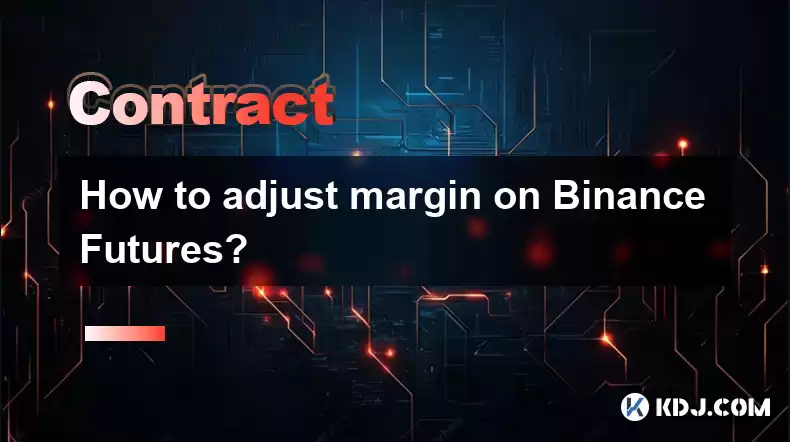-
 Bitcoin
Bitcoin $116700
0.24% -
 Ethereum
Ethereum $3973
4.34% -
 XRP
XRP $3.283
7.68% -
 Tether USDt
Tether USDt $1.000
0.01% -
 BNB
BNB $789.8
2.27% -
 Solana
Solana $176.2
3.31% -
 USDC
USDC $0.9999
0.00% -
 Dogecoin
Dogecoin $0.2238
5.14% -
 TRON
TRON $0.3389
-0.51% -
 Cardano
Cardano $0.7907
4.03% -
 Stellar
Stellar $0.4527
10.02% -
 Hyperliquid
Hyperliquid $41.07
4.27% -
 Sui
Sui $3.794
1.77% -
 Chainlink
Chainlink $19.49
10.40% -
 Bitcoin Cash
Bitcoin Cash $580.9
0.74% -
 Hedera
Hedera $0.2617
4.32% -
 Avalanche
Avalanche $23.41
3.67% -
 Ethena USDe
Ethena USDe $1.001
-0.03% -
 Litecoin
Litecoin $122.4
1.38% -
 Toncoin
Toncoin $3.364
1.49% -
 UNUS SED LEO
UNUS SED LEO $8.988
0.37% -
 Shiba Inu
Shiba Inu $0.00001295
2.82% -
 Uniswap
Uniswap $10.62
5.75% -
 Polkadot
Polkadot $3.922
4.46% -
 Dai
Dai $1.000
0.01% -
 Bitget Token
Bitget Token $4.494
2.15% -
 Monero
Monero $268.0
-1.30% -
 Cronos
Cronos $0.1523
3.68% -
 Pepe
Pepe $0.00001127
4.43% -
 Aave
Aave $285.4
4.85%
How to adjust margin on Binance Futures?
Binance Futures offers isolated and cross margin, impacting risk and leverage. Manage margin by adding funds or adjusting position size; Binance provides tools and alerts to prevent liquidation.
Mar 24, 2025 at 09:56 am

Key Points:
- Binance Futures offers several ways to adjust margin, depending on your position and risk tolerance.
- Understanding different margin types (isolated and cross) is crucial for effective margin management.
- Adjusting margin involves adding or reducing funds to your margin wallet.
- Proper margin management is key to mitigating risk and avoiding liquidation.
- Binance provides tools and notifications to help you monitor your margin levels.
How to Adjust Margin on Binance Futures?
Binance Futures allows users to trade with leverage, amplifying potential profits but also increasing the risk of liquidation. Liquidation occurs when your position's losses exceed your available margin. Therefore, understanding and managing your margin is critical. This involves adding more funds (increasing margin) or reducing your position size (effectively decreasing margin exposure).
Understanding Margin Types:
Before adjusting your margin, you need to grasp the difference between isolated and cross margin.
- Isolated Margin: This confines your losses to the specific amount allocated to that particular position. If your position liquidates, only the funds in the isolated margin wallet are affected. You can adjust the isolated margin level by modifying the margin ratio during order placement or by manually adjusting it afterward. This provides greater control but limits your trading power.
- Cross Margin: Your losses from one position can impact your entire account balance. This is riskier but allows for greater leverage across multiple positions. Adjusting your margin in a cross margin account typically involves depositing more funds into your Binance Futures wallet. This boosts your overall trading capacity, but careful risk management is essential.
Adjusting Your Margin: Step-by-Step Guide
Here's how to adjust your margin on Binance Futures, depending on the margin type:
For Isolated Margin:
- Step 1: Navigate to your "Open Orders" or "Positions" tab on the Binance Futures platform.
- Step 2: Locate the specific position you wish to modify.
- Step 3: Click on "Manage Margin".
- Step 4: Adjust the margin level either by inputting a specific amount or by modifying the margin ratio. The available margin will depend on your current balance and position size. Increase the margin level to reduce risk and add more capital to your position. Conversely, reduce it to free up funds, but be aware of the increased risk of liquidation.
For Cross Margin:
- Step 1: Deposit additional funds into your Binance Futures wallet. You can do this via various methods, such as transferring funds from your spot wallet or using a linked bank account. The process is similar to depositing funds for spot trading.
- Step 2: The increased balance will automatically increase your available cross margin. The amount of leverage you can utilize will increase proportionately.
Monitoring Your Margin Levels:
Binance Futures provides real-time monitoring tools to track your margin levels. Pay close attention to your margin ratio and liquidation price. Binance will usually send you alerts when your margin level gets dangerously low, warning you of potential liquidation. These alerts are crucial for timely adjustments to prevent significant losses.
Using Margin Calls:
Binance employs margin calls as a warning system. A margin call indicates your margin level has dropped below a critical threshold. It doesn't immediately liquidate your position, but it's a strong signal to act quickly. Either add more margin or reduce your position size to avoid liquidation. The specific margin call level depends on your chosen leverage and the asset's volatility.
Understanding Leverage and Risk:
Leverage significantly magnifies both profits and losses. Higher leverage requires more careful margin management. Incorrect margin management with high leverage can quickly lead to liquidation. Beginners should start with lower leverage levels to understand the dynamics before increasing their risk exposure.
Frequently Asked Questions:
Q: What happens if my margin level is insufficient?
A: If your margin level falls below the maintenance margin requirement, Binance will issue a margin call. If the margin level continues to drop, your position will be liquidated to cover losses.
Q: Can I adjust my margin on a pending order?
A: No, you can only adjust the margin of open positions. You can adjust the initial margin level when placing a new order.
Q: What are the fees associated with margin trading on Binance Futures?
A: Binance Futures charges funding fees for holding positions overnight, as well as trading fees based on your trading volume and maker/taker status. Check the Binance Futures fee schedule for the most up-to-date information.
Q: How do I transfer funds between my spot and futures wallets?
A: You can usually transfer funds between your spot and futures wallets directly within the Binance platform. The specific process may vary slightly depending on the asset.
Q: What are the risks associated with using high leverage?
A: High leverage significantly increases the risk of liquidation. Even small price movements against your position can lead to substantial losses and potential liquidation. Always use leverage responsibly and manage your risk carefully.
Disclaimer:info@kdj.com
The information provided is not trading advice. kdj.com does not assume any responsibility for any investments made based on the information provided in this article. Cryptocurrencies are highly volatile and it is highly recommended that you invest with caution after thorough research!
If you believe that the content used on this website infringes your copyright, please contact us immediately (info@kdj.com) and we will delete it promptly.
- Coinbase, Cosmos, and dYdX: Navigating the Crypto Currents
- 2025-08-09 06:30:16
- BNB Price, Altcoins, and Predictions: What's the Buzz?
- 2025-08-09 06:30:16
- Crypto Presale Projects Primed for Gains in 2025: A New Yorker's Take
- 2025-08-09 06:50:15
- Ruvi AI: The Millionaire Maker Poised for a Price Spike?
- 2025-08-09 06:50:15
- Cold Wallet, CoinMarketCap, Cardano & XRP: Navigating Crypto's Next Big Wave
- 2025-08-09 07:10:15
- Hedera (HBAR) Price Surge: Market Cap Soars, What's Next?
- 2025-08-09 07:10:15
Related knowledge

What is the difference between realized and unrealized PNL on KuCoin?
Aug 09,2025 at 01:49am
Understanding Realized and Unrealized PNL on KuCoinWhen trading on KuCoin, especially in futures and perpetual contracts, understanding the distinctio...

How does KuCoin Futures compare against Binance Futures in terms of features?
Aug 09,2025 at 03:22am
Trading Interface and User ExperienceThe trading interface is a critical component when comparing KuCoin Futures and Binance Futures, as it directly i...

What is the distinction between mark price and last price on KuCoin?
Aug 08,2025 at 01:58pm
Understanding the Basics of Price in Cryptocurrency TradingIn cryptocurrency exchanges like KuCoin, two key price indicators frequently appear on trad...

What are the specific maker and taker fees on KuCoin Futures?
Aug 08,2025 at 08:28am
Understanding Maker and Taker Fees on KuCoin FuturesWhen trading on KuCoin Futures, users encounter two primary types of fees: maker fees and taker fe...

Can you explain the difference between cross margin and isolated margin on KuCoin?
Aug 09,2025 at 02:57am
Understanding Margin Trading on KuCoinMargin trading on KuCoin allows traders to borrow funds to increase their trading position beyond their actual c...

How can I open a long position on KuCoin Futures?
Aug 09,2025 at 02:07am
Understanding KuCoin Futures and Long PositionsOpening a long position on KuCoin Futures means you are speculating that the price of a cryptocurrency ...

What is the difference between realized and unrealized PNL on KuCoin?
Aug 09,2025 at 01:49am
Understanding Realized and Unrealized PNL on KuCoinWhen trading on KuCoin, especially in futures and perpetual contracts, understanding the distinctio...

How does KuCoin Futures compare against Binance Futures in terms of features?
Aug 09,2025 at 03:22am
Trading Interface and User ExperienceThe trading interface is a critical component when comparing KuCoin Futures and Binance Futures, as it directly i...

What is the distinction between mark price and last price on KuCoin?
Aug 08,2025 at 01:58pm
Understanding the Basics of Price in Cryptocurrency TradingIn cryptocurrency exchanges like KuCoin, two key price indicators frequently appear on trad...

What are the specific maker and taker fees on KuCoin Futures?
Aug 08,2025 at 08:28am
Understanding Maker and Taker Fees on KuCoin FuturesWhen trading on KuCoin Futures, users encounter two primary types of fees: maker fees and taker fe...

Can you explain the difference between cross margin and isolated margin on KuCoin?
Aug 09,2025 at 02:57am
Understanding Margin Trading on KuCoinMargin trading on KuCoin allows traders to borrow funds to increase their trading position beyond their actual c...

How can I open a long position on KuCoin Futures?
Aug 09,2025 at 02:07am
Understanding KuCoin Futures and Long PositionsOpening a long position on KuCoin Futures means you are speculating that the price of a cryptocurrency ...
See all articles

























































































